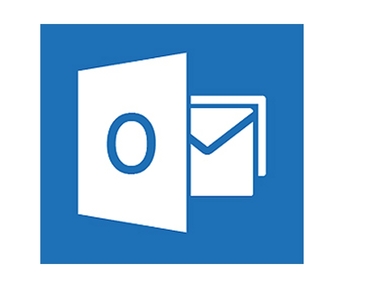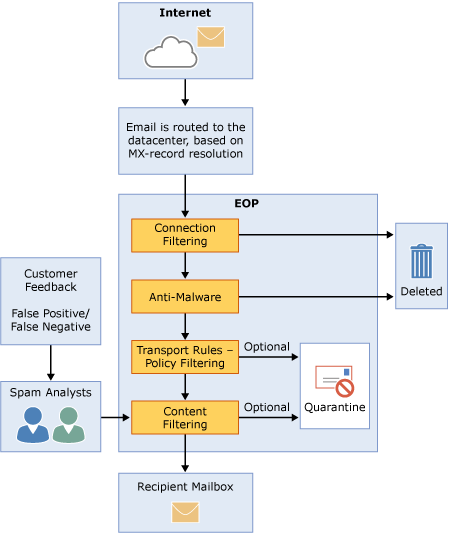Outlook.com
What's up with microsoft?
A c/p from an email I sent to a mailing list.
I think we’re seeing a new normal, or are still on the pathway to a new normal. Here’s my theory.
1) Hotmail made a lot of underlying code changes, learning from 2 decades of spam filtering. They had a chance to write a new codebase and they took it.
2) The changes had some interesting effects that they couldn’t test for and didn’t expect. They spent a month or two shaking out the effects and learning how to really use the new code.
3) They spent a month or two monitoring. Just watching. How are their users reacting? How are senders reacting? How are the systems handling everything?
3a) They also snagged test data along the way and started learning how their new code base worked and what it can do.
4) As they learned more about the code base they realized they can do different and much more sophisticated filtering.
5) The differences mean that some mail that was previously OK and making it to the inbox isn’t any longer.
5a) From Microsoft’s perspective, this is a feature not a bug. Some mail that was making it to the inbox previously isn’t mail MS thinks users want in their inbox. So they’re filtering it to bulk. I’ll also step out on a limb and say that most of the recipients aren’t noticing or caring about the missing mail, so MS sees no reason to make changes to the filters.
6) Expect at least another few rounds of tweak and monitor before things settle into something that changes more gradually.
Overall, I think delivery at Microsoft really is more difficult and given some of the statements coming out of MS (and some of the pointed silence) I don’t think they’re unhappy with this.
Widespread Microsoft phishing warnings today
People throughout the industry are reporting phishing notices in a lot of mail going through Microsoft properties this morning. I even got one in an email from one of my clients earlier today![]()
Multiple people have talked to employees inside Microsoft, and I suspect their customers have been blowing up support about this. I know they’re aware, I suspect they’re frantically working on a fix.
Update 11 am PDT: It appears this filter is firing when mail has the word “hotmail” in it. This includes if non displaying text (like CSS) has the word in it. It feels like they were attempting to mitigate something and wrote a rule that wasn’t quite right. Still no word on a fix, but don’t panic.
Update 12:30 PDT: Reports are that the warning is gone. No word from Microsoft, but as long as things get fixed we don’t need it.
Happy 2018
This is the time of year when everyone starts posting their predictions for the coming year. Despite over a decade of blogging and close to 2500 blog posts, I have’t consistently written prediction articles here. Many years I don’t see big changes on the horizon, so there’s not a lot to comment on. Incremental changes are status quo, nothing earth shattering there. But I’ve been thinking about what might be on the horizon in 2018 and how that will affect email marketing.
Microsoft MXs changed over
Today on MailOp it was announced that the migration of Microsoft freemail domains to the office 365 backend. Over the next week the mx*.hotmail.com mail servers will stop working. Check your settings, folks, and make sure you’re correctly querying DNS before sending.
Read MoreOctober 2017: The Month in Email
October was a busy month. In addition to on boarding multiple new clients, we got new desks, I went to Toronto to see M3AAWG colleagues for a few days, and had oral surgery. Happily, we’re finally getting closer to having the full office setup. 
What is an office without a Grover Cat? (he was so pleased he figured out how to get onto it at standing height).
All of this means that blogging was pretty light this month.
One of the most interesting bits of news this month is that the US National Cybersecurity Assessments & Technical Services Team issued a mandate on web and email security, which Steve reviewed here.
In best practices, I made a brief mention about the importance of using subdomains rather than entirely new domain names in links and emails and even DKIM keys.
We’ve talked about engagement-based filters before, but it’s interesting to note how they’re being used in business environments as well as consumer environments.
We also put together a survey looking at how people use Google Postmaster Tools. The survey is now closed, and I’ll be doing a full analysis over the next couple of weeks, as well as talking about next steps. I did a quick preview of some of the highlights earlier this week.
Finally, a lot of industry news this month: Most notably, Mailchimp has changed its default signup process from double opt-in to single opt-in. This caused quite a bit of sturm und drang from all ends of the industry. And, in fact, a few days later they announced the default double-opt-in would stay in place for .eu senders. I didn’t get a chance to blog about that as it happened. In other news, the Road Runner FBL is permanently shuttered, and Edison Software has acquired Return Path’s Consumer Insight division. Also worth noting: Microsoft is rolling out new mail servers, and you’ll likely see some new — and potentially confusing — error codes.
My October themed photo is behind a cut, for those of you who have problems with spiders.
Troubleshooting and codes
Microsoft is still in the process of rolling out new mail servers. One thing that is new about these is some new codes on their error messages. This has led to questions and speculations as to what is going on.
Microsoft changes
There’s been quite a bit of breakage and delivery failure to various Microsoft domains this month. It started with them changing the MX for hotmail.co.uk, then the MX for hotmail.fr… and both these things seem to have broken mail. I also saw a report this morning that some of the new MXs have TLS certificates that don’t match the hostnames.
Microsoft deprecating SmartScreen filters
At the beginning of the month Microsoft announced that they were deprecating the SmartScreen filters used by the desktop Microsoft mail clients. These are the filters used in Exchange and various version of Outlook mail. This is yet further consolidation of spam filtering between the Microsoft free webmail domains, Office365 hosted domains and self hosted Exchange servers. The online services (hotmail.com, outlook.com, Office365, live.com, etc) have been using these filters for a while. The big change now is that they’re being pushed down to Exchange and Outlook users not hosted on the Microsoft site.
EOP was developed for Outlook.com (and friends) as well as Office365 users. From Microsoft’s description, it sounds like the type of machine learning engine that many providers are moving to.
Microsoft has published quite a bit of information about these filters and how they work on their website. One of the best places to start is the Anti-spam Protection FAQ. Something senders should pay attention to is the final question on that page: “What are a set of best outbound mailing practices that will ensure that my mail is delivered?” Those are all things deliverability folks recommend for good inbox delivery.
Poking around looking at the links and descriptions, there is a host of great information about spam filtering at Microsoft and how it works.
A page of note is their Exchange Online Protection Overview. This describes the EOP process and how the filters work.
Getting unblocked at Outlook.com
It’s been a crazy week here at M3AAWG. I have a lot of stuff to blog about, but I think one of the really important things to get out is the new unblock request page at Outlook / Hotmail.
https://sender.office.com
Submit your IPs and it will be reviewed.
(Apologies for the repeated bad links. I’m blaming con crud, lack of sleep and MSN/Hotmail/Office/Outlook for having so many domains I can’t keep them straight. I have finally gotten it right and tested it.)
Office365/EOP and Outlook.com/Hotmail will converge
Terry Zink posted two informative blog posts recently, the first being the change to unauthenticated mail sent over IPv6 to EOP and the second post about EOP (Office365 and Exchange Hosting) and Outlook.com/Hotmail infrastructure converging.
Exchange Online Protection (EOP) is the filtering system in place for Office 365 and hosted Exchange customers. Outlook.com/Hotmail utilized its own mail filtering system and provides SNDS/JMRP programs. EOP is setup for redundancy, failover, provides geo-region servers to serve customers, and has supported TLS for over a decade. Terry explains that Hotmail’s spam filtering technology is more advanced than EOP’s, but EOP’s backend platform is more advanced. The process to convert Outlook.com/Hotmail to use EOP’s filtering system started six months ago and is still a work in progress. Once completed, Outlook.com/Hotmail and Office365/EOP will share the same UX look and feel. The anti-spam technologies will be able to be shared between the two as they will share the same backend infrastructure.
Some of the challenges of merging the two systems include:
Mythbusting deliverability and engagement
Yesterday I published an article talking about an engagement webinar hosted by the EEC and DMA. I made a couple predictions about what would be said.
Read MoreISPs speak at M3AAWG
Last week at M3AAWG representatives from AOL, Yahoo, Gmail and Outlook spoke about their anti-spam technologies and what the organizations were looking for in email.
This session was question and answers, with the moderator asking the majority of the questions. These answers are paraphrased from my notes or the MAAWG twitter stream from the session.
What are your biggest frustrations?
AOL: When senders complain they can’t get mail in and we go look at their stats and complaints are high. Users just don’t love that mail. If complaints are high look at what you may have done differently, content does have an effect on complaints.
Outlook: When we tightened down filters 8 years ago we had to do it. Half of the mail in our users inbox was spam and we were losing a steady number of customers. The filter changes disrupted a lot of senders and caused a lot of pain. But these days only 0.5% of mail in the inbox is spam. Things happen so fast, though, that the stress can frustrate the team.
Gmail: Good senders do email badly sometimes and their mail gets bulked. Senders have to get the basic email hygiene practices right. Love your users and they’ll love you back.
What’s your philosophy and approach towards mail?
AOL: There is a balance that needs to be struck between good and bad mail. The postmaster team reminds the blocking team that not all mail is bad or malicious. They are the sender advocates inside AOL. But the blocking team deals with so much bad mail, they sometimes forget that some mail is good.
Yahoo: User experience. The user always comes first. We strive to protect them from malicious mail and provide them with the emails they want to see. Everything else is secondary.
Gmail: The faster we stop spam the less spam that gets sent overall. We have highly adaptive filters that can react extremely quickly to spam. This frustrates the spammers and they will give up.
Outlook: The core customer is the mailbox user and they are a priority. We think we have most of the hardcore spam under control, and now we’re focused on personalizing the inbox for each user. Everyone online should hold partners accountable and they should expect to be held accountable in turn. This isn’t just a sender / ESP thing, ISPs block each other if there are spam problems.
What are some of your most outrageous requests?
We’ve been threatened with lawsuits because senders just don’t want to do the work to fix things. Some senders try to extort us. Other senders go to the advertising execs and get the execs to yell at the filtering team.
Coming to MAAWG and getting cornered to talk about a particular sender problem. Some senders have even offered money just to get mail to the spam folder.
Senders who escalate through the wrong channels. We spent all this money and time creating channels where you can contact us, and then senders don’t use them.
Confusing business interests with product interests. These are separate things and we can’t change the product to match your business interest.
What are your recommendations for changing behaviors?
Outlook: We provide lots of tools to let you see what your recipients are doing. USE THE TOOLS. Pay attention to your recipient interaction with mail. Re-opt-in recipients periodically. Think about that mail that is never opened. Monitor how people interact with your mail. When you have a problem, use our webpages and our forms. Standard delivery problems have a play book. We’re going to follow that playbook and if you try to get personal attention it’s going to slow things down. If there’s a process problem, we are reachable and can handle them personally. But use the postmaster page for most things.
Gmail: Get your hygiene right. If you get your hygiene right, deliverability just works. If you’re seeing blocking, that’s because users are marking your mail as spam. Pay attention to what the major receivers publish on their postmaster pages. Don’t just follow the letter of the law, follow the spirit as well. Our responsibility, as an ISP, is to detect spam and not spam. Good mailers make that harder on us because they do thinks that look like spammers. This doesn’t get spammer mail in more, it gets legitimate mail in less. Use a real opt-in system, don’t just rely on an implied opt-in because someone made a purchase or something.
Yahoo: ESPs are pretty good about screening their customers, so pay attention to what your ESPs are saying. Send mail people want. Verify that the email addresses given to you actually belong to people who want your mail. Have better sender practices.
What do you think about seed accounts?
The panel wasn’t very happy about the use of seed accounts. Seeds are not that useful any longer, as the ISPs move to more and more personalized delivery. Too much time and too many cycles are used debugging seed accounts. The dynamic delivery works all ways.
When things go wrong what should we do?
AOL: Open a ticket. We know we’ve been lax recently, but have worked out of our backlog and are caught up to date. Using the ticketing system also justifies us getting more headcount and makes everyone’s experience better. Also, don’t continue what you’re doing. Pausing sending while you’re troubleshooting the issue. We won’t adjust a rep for you, but we may be able to help you.
Gmail: Do not jump the gun and open a ticket on the first mail to the spam folder. Our filters are so dynamic, they update every few minutes in some cases. Be sure there is a problem. If you are sure you’re following the spirit and letter of the sender guidelines you can submit a ticket. We don’t respond to tickets, but we work every single one. When you’re opening a ticket provide complete information and full headers, and use the headers from your own email address not headers from a seed account. Give us a clear and concise description of the problem. Also, use the gmail product forum, it is monitored by employees and it’s our preferred way of getting information to the anti-abuse team. Common issues lots of senders are having will get addressed faster.
Outlook: Dig in and do your own troubleshooting, don’t rely on us to tell you what to fix. The support teams don’t have a lot of resources so use our public information. If you make our job harder, then it takes longer to get things done. But tell us what changes you’ve made. If you’ve fixed something, and tell us, our process is different than if you’re just asking for a delisting or asking for information. When you’ve fixed things we will respond faster.
How fast should users expect filters to respond after making changes?
Filters update continually so they should start seeing delivery changes almost immediately. What we find is people tell us they’ve made changes, but they haven’t made enough or made the right ones. If the filters don’t update, then you’ve not fixed the problem.
Outlook.com in practice
I’ve seen a few people talking about outlook.com and how it’s working. There aren’t many insights here but there are a couple.
Read More